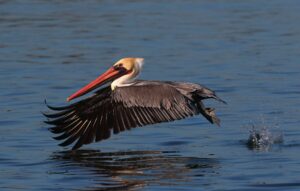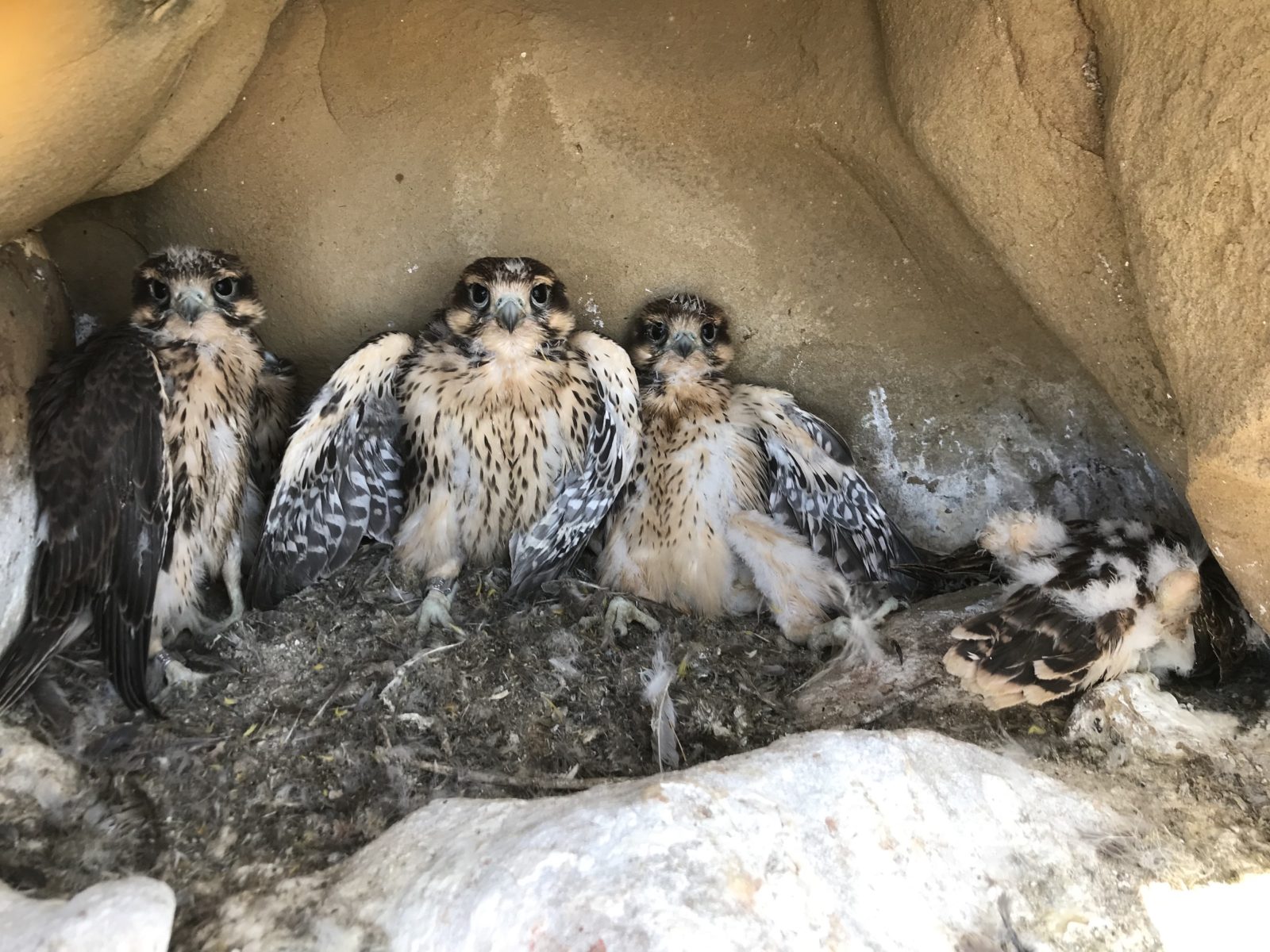
A pale shape hurtles through the sky, screeching at me and Doug Bell, wildlife program manager for the East Bay Regional Park District. In his arms, Bell is gently swaddling the patchily feathered form of a prairie falcon chick and banding it near the nest site at Round Valley Regional Preserve, north of Livermore. Open grasslands of annual ryegrass and wild oats studded with blue and valley oaks stretch for nearly 2,200 acres around us. Soaring overhead is the chick’s mother, banded by Bell years before.
The chick’s feathers sprout out as a mix of white, fuzzy down and dark sleek flight feathers, and its eyes are large and bright under the midmorning sun. While the chick’s mother and I watch, Bell deftly records measurements and secures loose-fitting aluminum bands, labeled with a unique nine-digit code, around the chick’s legs.
The bands will hopefully remain on the chick throughout its roughly three-to-seven-year lifetime, helping scientists like Bell monitor this enigmatic raptor species. He has been tagging prairie falcons living in EBRPD’s roughly 75,000 acres of grasslands to monitor the local population size, analyze genetics from blood samples, and track individuals via radio and satellite telemetry for more than two decades.
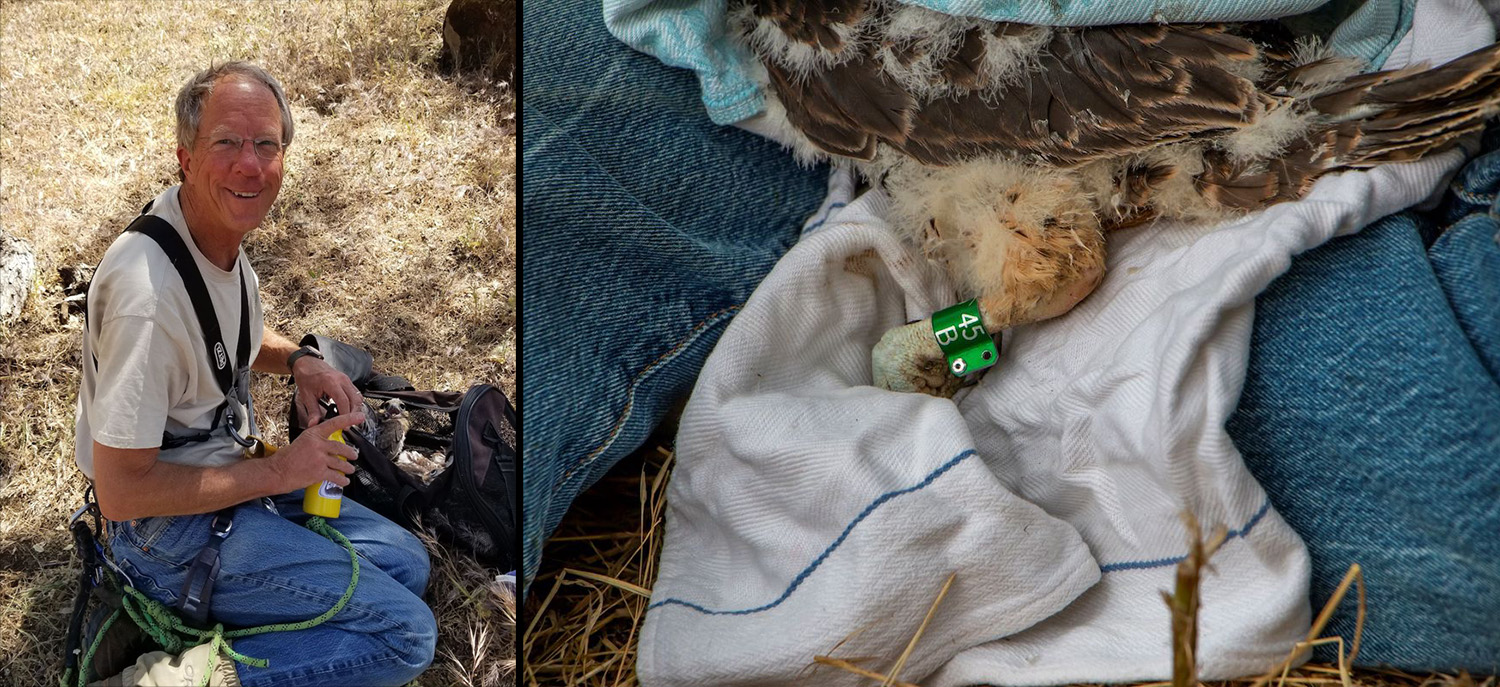
The number of pairs nesting in EBRPD’s grasslands and mix of chaparral and oak-savanna habitats has declined in recent years, according to Bell’s data. Threats abound, ranging from rodenticide to, most notably, the conversion of grasslands into housing developments, vineyards, orchards, and renewable energy sites—wind and solar—that erase habitat essential to the survival of prairie falcons and other species.
“Peregrines are birds of the air,” Bell says. “Prairie falcons are falcons of the ground. They need what we’re looking at right here—open space. They’re more critically impacted [than peregrines are] by habitat conversion and urbanization throughout California.”
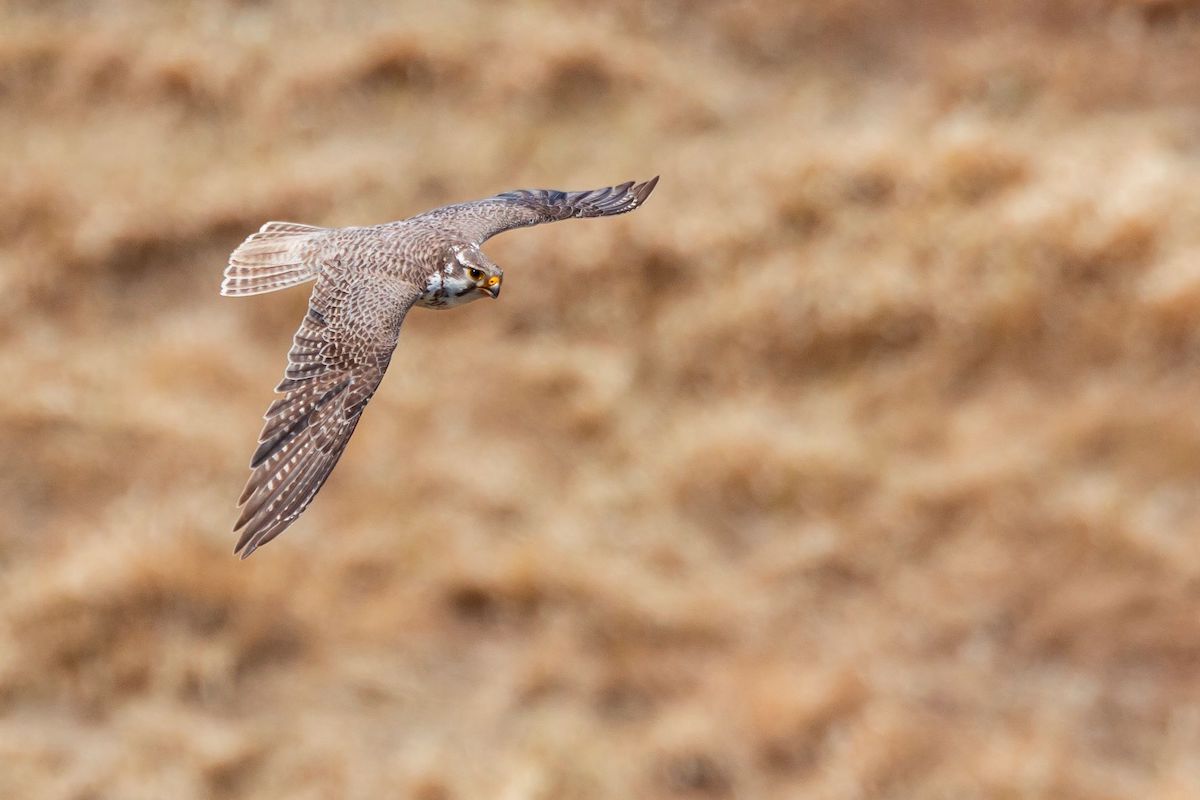
The peregrine’s ‘neglected’ sister
Prairie falcons (Falco mexicanus) are the “quintessential large falcon of North America,” says Gavin Emmons, wildlife biologist at Pinnacles National Park, near Soledad. They can hunt across undefended territories ranging from around 30 miles to over 180 miles of grassland or shrub-steppe habitat, often sharing these hunting territories with other prairie falcons that have similarly flown great distances to hunt.
When hunting, prairie falcons will cruise over miles of grasslands using a “contour-hugging flight” in search of prey such as western meadowlarks, horned larks, and ground squirrels, explains Karen Steenhof, wildlife biologist and researcher with the Morley Nelson Snake River Birds of Prey National Conservation Area in Idaho. “Their whole mode of hunting is adapted to grasslands.”
And their hunting strategies match their prey bases. “You’re not going to find horned larks in downtown Berkeley,” Bell says. Unfortunately, grassland birds are among those whose populations are currently facing the steepest declines, likely because of large-scale habitat loss.
Prairie falcons only live in parts of the U.S., Canada, and Mexico, which makes them, in Bell’s words, a “North American endemic.” His work focuses on where the chicks he bands in the East Bay end up after fledging, which is roughly 40 days after hatching. Attaching radio and satellite telemetry tags to some banded birds, he also relies on recognising the bands and the recovery of deceased banded birds.
Guided by a radio transmitter signal, Bell once climbed into a great horned owl’s nest on Mount Diablo and found the tag and a discarded band: all that remained of a tagged prairie falcon. The great horned owl, Bell explains, is the “great equalizer” in the bird world.
Predators aside, the East Bay grassland habitats provide good habitat for prairie falcons. The prairie falcon adults that nest in the East Bay tend to stay in the area year-round. “It’s like, if you’ve got a house in the Bay Area, if you can afford it, you don’t want to leave it,” Bell says.
But, for the chicks, it’s a different story. A chick banded in western San Joaquin County was photographed later that year in Montana, and others have been found in Idaho. Genetics work by Bell and coauthors has shown seemingly very little genetic variation between and within prairie falcon populations in California and those in Idaho.
Despite their more targeted presence in North America, prairie falcons often sit in the shadow of the peregrine (Falco peregrinus), which can be found worldwide. “It’s sister to the peregrine—like the neglected sister,” Bell says.
While peregrines are the raptors most known for reaching speeds of up to 200 miles per hour, it is likely that prairie falcons can reach similar speeds, although they often deploy a range of hunting strategies, not all of which involve high-speed flight.
Some falcon experts think a type of sibling rivalry could be at play as recovering peregrine populations push prairie falcons out of previously established nesting sites. However, Bell notes that he has seen nest turnovers go both ways, with both species displacing the other.
Checking in on the chicks
The Round Valley nest rests in a protected shallow cavity, or pothole, about 160 feet up a cliff face, and before Bell can band the chicks, he has to reach them. Like peregrines, prairie falcons do not construct stick nests, but instead lay their eggs directly on the bases of cliffside cavities. The chicks in this nest, of which there are seemingly at least three, sit relatively still, their fuzzy, orblike bodies huddling so close together that it is difficult to tell where one ends and another begins.
While I admire the chicks through a spotting scope, Bell strategizes about how best to reach the nest, and before long, he is off. He walks around and up to the top of the cliff face, ties his rope around a nearby oak tree, then begins slowly rappelling down until he hovers above the pothole, feet from the chicks.

Balancing himself on the edge of the nest cavity, still tied to the oak above, he carefully extracts each chick from the pothole, placing it in the large, cloth pet carrier lined with towels that he has looped around his shoulders. The removal of each chick from the nest is punctuated by a chorus of indignant shrieks and a flurry of downy feathers. Extraction complete, Bell returns to ground level with the carrier tucked in his arms holding not three but five baby falcons.
These undeniably adorable chicks are also important for a species whose population has been declining in recent years in the East Bay. “In the mid-2000s, in a good year, we would have on the order of 12 prairie falcon active nests, in other words, territories, with adults breeding,” Bell says. “This year, we’ve got five. That’s been the case for quite some time now—we just don’t have the number of birds that we had before.”
Prairie falcon populations in other western regions are also changing, but in some cases for the better. At Pinnacles National Park, nesting productivity was potentially in decline for over a decade, but the past two nesting seasons have been remarkably successful, according to wildlife biologist Gavin Emmons. In the most recent season, nine nests produced over 30 fledglings. To the east, in the Snake River Canyon area of Idaho, prairie falcon population surveys conducted from 2019 to 2021 found over 200 pairs within just 51 miles of the canyon—the densest prairie falcon population in North America, with the cliff nests assembled “almost like high-rise apartments of prairie and peregrine falcons nesting on top of each other,” Emmons says.
While researchers like Bell, Emmons, and Steenhof work to keep tabs on the regional statuses of prairie falcons, when it comes to a range-wide understanding of the species, very little is conclusively known. Species-wide population counts are rough estimates at best, and the falcons’ overall distribution remains largely unknown.
“All the information is pretty much regional,” Steenhof says. “We haven’t been able to put it all together”—yet. A prairie falcon working group established in the fall of 2021, led by Gail Garber of Hawks Aloft with members like Bell and Steenhof, will be compiling the regional field data for a broader look.
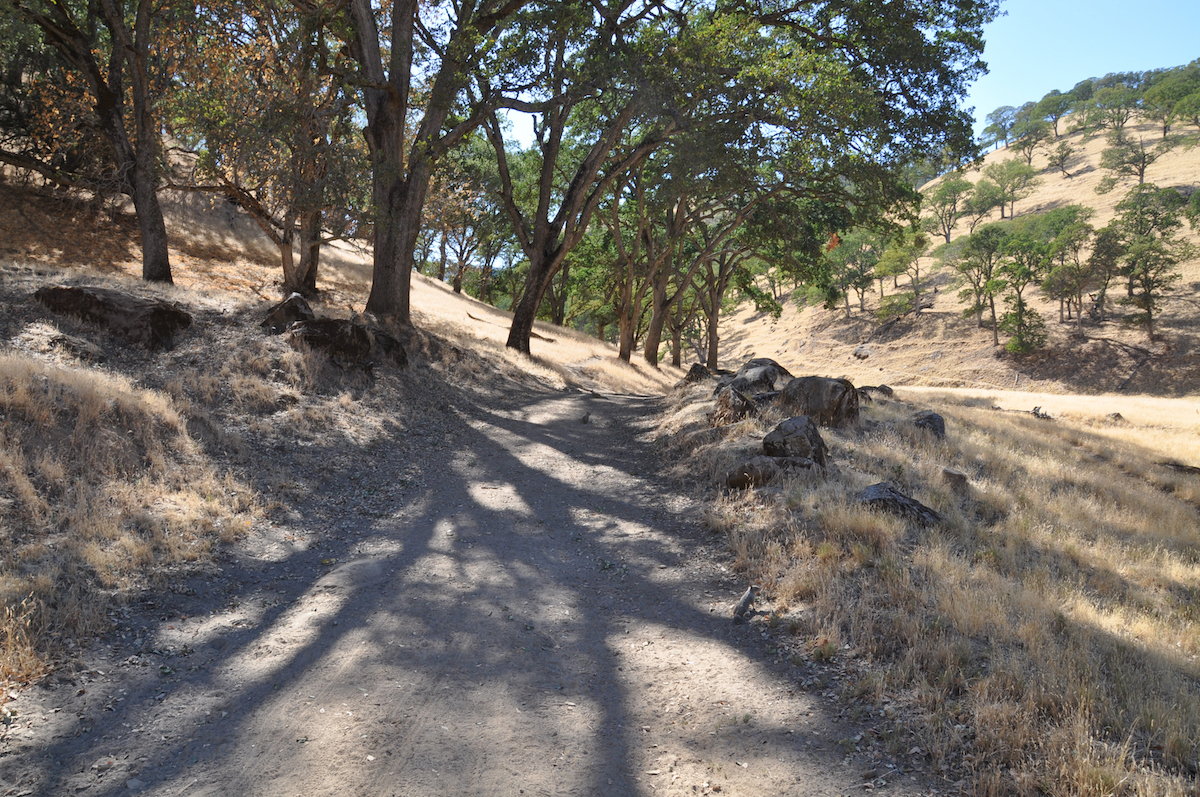
Glorious grasslands
Like the populations of East Bay prairie falcons, the grasslands they depend on in California are dwindling. Over 73 square miles of grasslands are lost each year in California. The remaining 21,777 square miles of grassland make up 10 percent of the state’s landmass. “If they [grasslands] disappear, then the prairie falcons will disappear,” says Dina Robertson, wildland vegetation program manager for EBRPD.
Grasslands support and sustain large swaths of California’s biodiversity. They also soak up water and prevent erosion, and their expansive root systems store carbon. “There’s a lot of carbon in there, but people still don’t talk about that as much because there’s so much more carbon stored by trees aboveground,” Robertson says. “Grasslands have a PR problem,” she adds. “It’s hard to get people excited about small things, little things, details—it’s just not that charismatic.”
Enter the East Contra Costa County Habitat Conservation Plan (HCP)—a conservation strategy, launched in 2000, that streamlines development permitting regarding endangered species and wetlands while simultaneously restricting where development is allowed in the future. The county collects environmental impact fees from developers and funnels them to partners, such as EBRPD, to restore habitats, support research, and buy more land for conservation that will ultimately become accessible to the public.
Brian Holt, chief of planning, trails, and GIS for EBRPD, explained that under this plan, urban development in East Contra Costa County is coupled with habitat conservation so that as urban areas and developments expand and grow, so do the boundaries of protected lands. This 30-year plan is halfway completed. Fifteen thousand acres in East Contra Costa County, which are largely composed of grasslands, have been conserved in the past 15 years since the plan was put into action. The ultimate goal is to conserve an additional 15,000 acres in the next 15 years.
Many of the grasslands purchased by EBRPD through this plan were once private ranchlands, and the acquisitions have helped to permanently protect more contiguous stretches, or wildlife corridors, of habitat. “What you’ve seen happen over the past 15 years during implementation is you did have parks that were relatively isolated—Morgan Territory or Round Valley,” Holt says, as well as Mount Diablo State Park, Marsh Creek State Historic Park, and Los Vaqueros watershed. “You’re seeing the gaps in between those protected areas essentially being closed through acquisition, so you’re stitching it together.”
Alameda County has a plan similar to East Contra Costa County’s HCP, known as the East Alameda County Conservation Strategy.
Little falcon on the prairie
Protecting Prairie FalconsFor several months each year, EBRPD and other agencies may close select trails in a few parks to protect prairie falcons and their chicks during the nesting season. Closures vary year to year, but can often last from early February through the end of July:
• Morgan Territory Regional Preserve
• Round Valley Regional Preserve
• Castle Rock Regional Recreation Area
• Mount Diablo State Park
Other parks may close on an as-needed basis.
» Volunteering: Those interested in volunteering to monitor prairie falcons, an important aspect of protecting the species, are encouraged to visit ebparks.org/get-involved/volunteer for more information. Training is required to learn how to most safely monitor these birds from a distance.
» Rodenticide: Rodent-eating raptors—such as prairie falcons—are threatened by rodenticide, which can poison and kill them. The next time you encounter an unwelcome rodent visitor, consider alternative deterrents, such as rodent traps, owl box installation, and more secure waste and food storage.
Round Valley, where Bell banded the prairie falcon chicks, was acquired before the HCP was launched, but its acquisition took place under a similar model, intended to mitigate the environmental impacts caused by Los Vaqueros Reservoir’s creation. It was because of that purchase that prairie falcons, like those banded by Bell, live there now.
Prairie falcons’ lives unfold largely out of the public eye. They blend in seamlessly in their grassland habitats and can be easily missed—unless you’re trying to band their chicks.
“They really should be on our radar,” Bell says. “They just don’t get the coverage, by virtue of where they hang out. But that doesn’t mean their habitats are any less valuable or that the bird is any less valuable.”
Bell and I leave Round Valley with measurements taken, bands securely fastened, and the chicks safely returned to their nest.
Golden grasslands blanket the hills on either side of the road as we drive away, and I leave with a deeper appreciation not just for prairie falcons but also for the grassland ecosystems that make their lives possible. “It’s a privilege to be able to do this,” Bell says, as he drives. “It’s a privilege to be able to worry about our creatures and try to find ways forward.”




